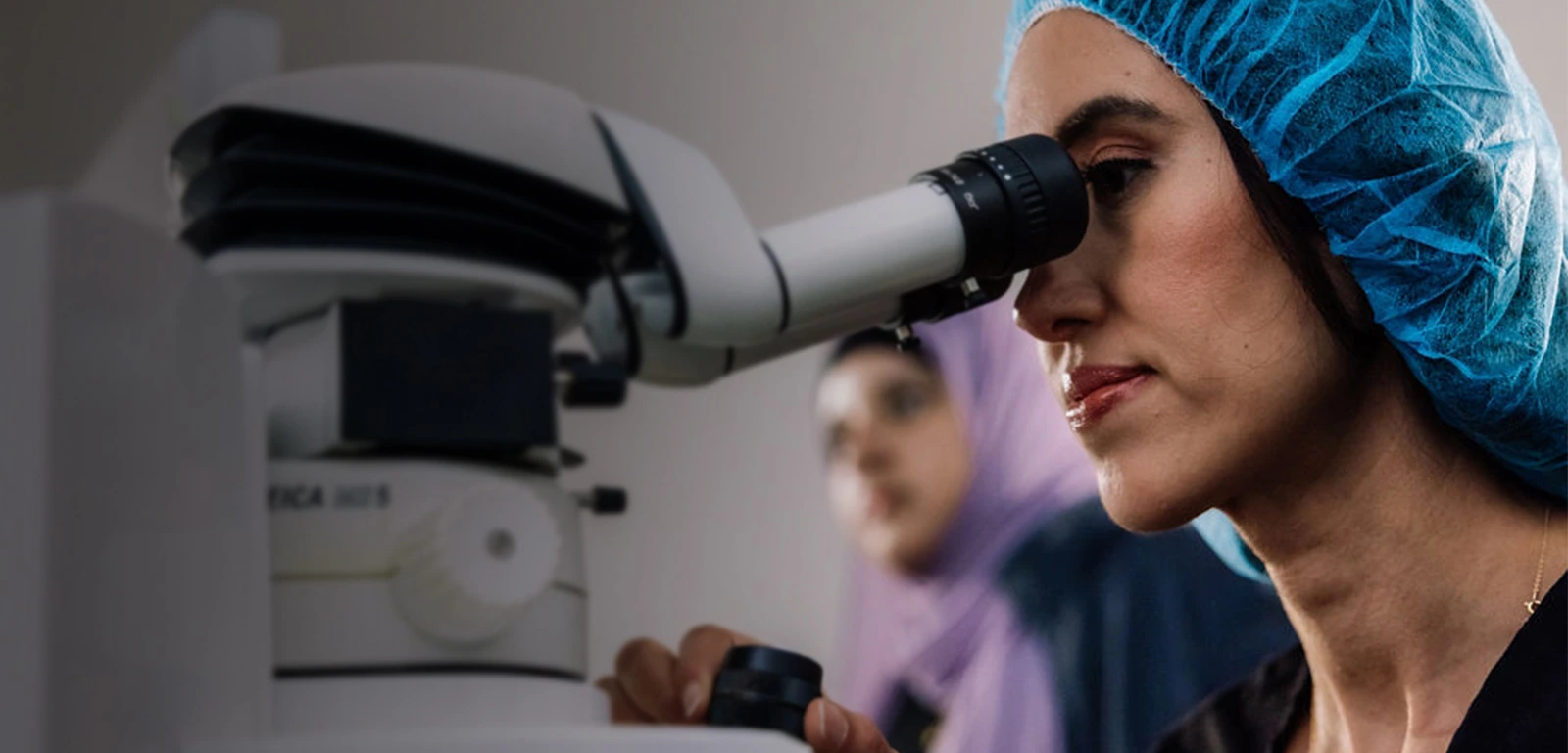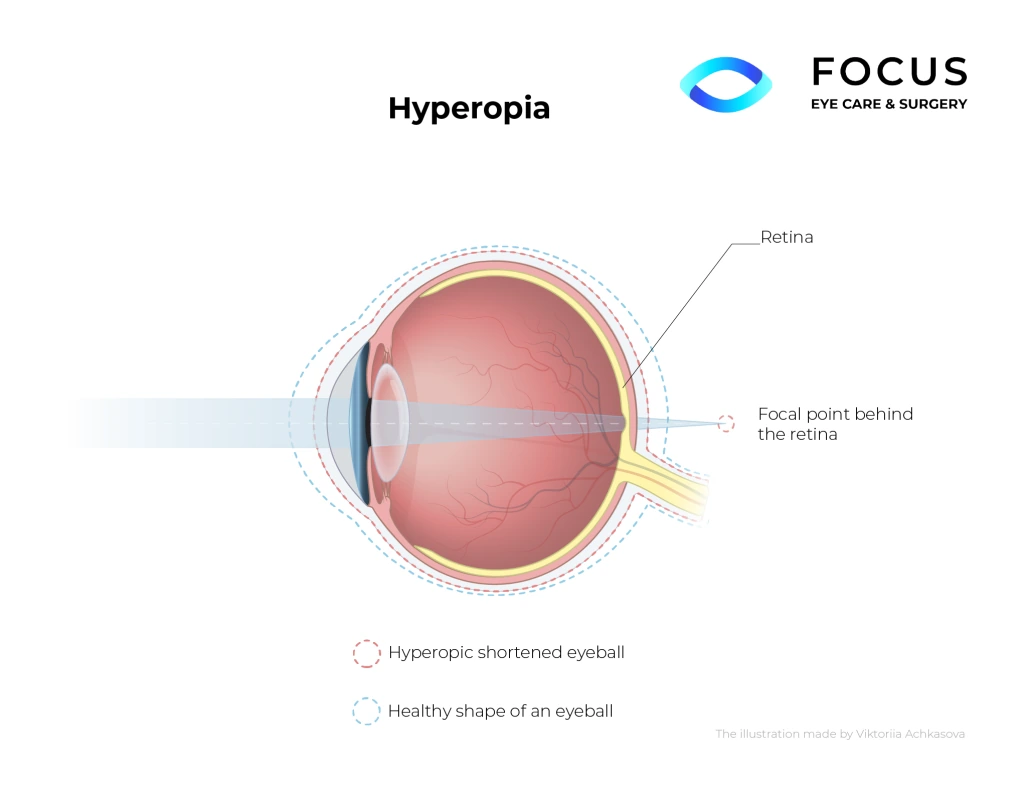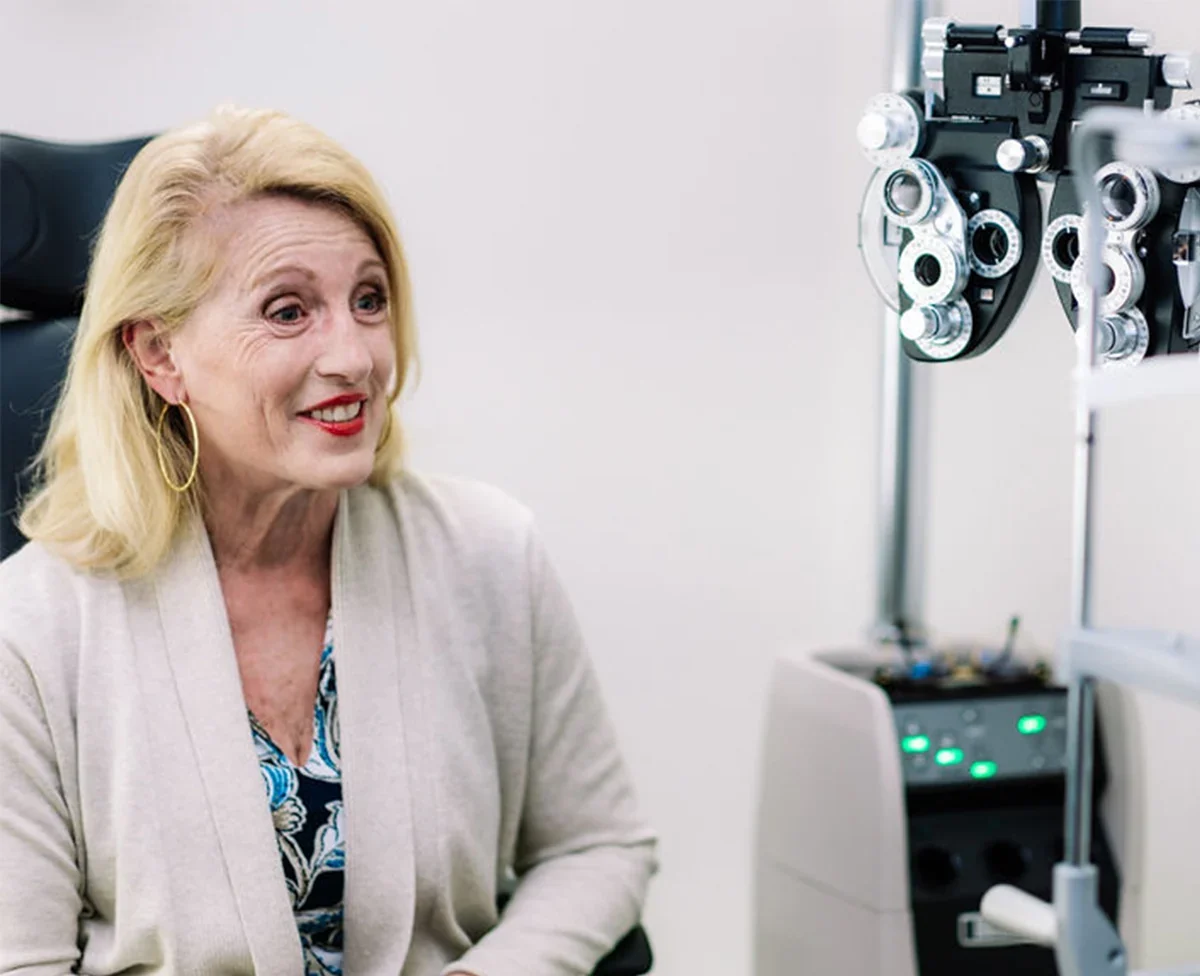
Hyperopia
Hyperopia
Would You Like to Enjoy Doing Things Up Close Without Squinting?
Schedule a consultation with us today to get a comprehensive eye exam.
Our New York eye specialist will perform a thorough evaluation and create a treatment plan with you that keeps up with your lifestyle.


Hyperopia is a common refractive error among Americans. It occurs in about 5% to 10% of the population, according to the National Eye Institute.
You need not be a part of this statistic. Gain clearer vision up close at Focus Eye Care & Surgery. Our board-certified eye doctor in New York, Dr. Neelofar Ghaznawi, is highly trained and experienced in performing refractive surgery. She is a member of the American Society of Cataract and Refractive Surgeons.
What Is Hyperopia?
Hyperopia, or farsightedness, is an error in how the eyes bend light such that objects far away appear more clearly while objects nearby appear blurred. This happens because light rays are not focused to a sharp, single point onto the retina, but behind it.
What causes hyperopia?
In a normal eye, the cornea, or the clear dome-shaped surface of the eyes, bends light rays, which then pass through the pupil, or the opening in the eyes. The crystalline lens just behind the pupil then focuses the light rays to a single point onto the retina, the light-sensitive layer of tissue lining the back of the eyes.
The electrical impulses are then sent to the brain by way of the optic nerve to create the images we see.
Hyperopia happens when:
- The cornea is too flat.
- The eye, from front to back, is shorter than normal. This structure results in the shortening of distance between the cornea and retina.
Hyperopia can be inherited. When other members of your family are farsighted, you are likely to become farsighted too. In children, it is possible to ‘outgrow’ hyperopia as their eyes become longer over time.

What Are the Symptoms of Hyperopia?
Some symptoms include headaches, difficulty with tasks up close, such as reading and needlework, squinting etc.
Headaches because of eye strain are common among people with hyperopia. Difficulty with tasks up close like reading and needlework is also a common symptom.
Some people with hyperopia squint to see things up close more clearly.
Children may not be aware they have hyperopia because they have no reference as to what makes sharp vision.
This is why it’s vital to have children’s eyes checked early, ideally before school-age when farsightedness may impact their academic and sports performance. If you suspect you have hyperopia, book a consult with Focus Eye Care & Surgery today to enjoy daily activities that require close work.
How is hyperopia diagnosed?
The standard eye chart is used to determine if you have normal vision. If the eye doctor suspects you have hyperopia, he or she may perform a comprehensive eye exam using a more specialized diagnostic tool.
The eye specialist may use a handheld retinoscope to accurately diagnose the kind of refractive error you have. They do this by shining a special light inside the eyes and looking at how that light bounces off your retina.
A lens is placed in front of your eyes one at a time until the doctor reaches the right lens power that indicates your eyes’ refractive error.
The more imposing-looking phoropter functions the same way. This device allows eye specialists, along with your answers to their questions, to determine the exact lens shape and curvature that would correct the refractive error in each eye. Even better, the phoropter allows the eye specialist to check muscle coordination in your eyes and how well your eyes work together (binocular vision).

FAQs About Hyperopia
Hyperopia is an error in how your eyes bend the light, not an eye disease. Depending on your lifestyle, refractive errors are typically corrected by glasses or contact lenses. If you want to reduce your dependence on them, another treatment option involves surgery.
Refractive surgery reshapes the cornea and makes it steeper. Personalized lens surgery entails implanting an intraocular lens (IOL) in place where the natural lens used to be. Often, the IOL implanted is multifocal so your eye is able to see both near and distant objects clearly.
Hyperopia, also known as farsightedness, occurs when light rays do not focus on the retina and instead focus behind the retina, making near objects appear blurred and distorted. This can happen when the eyeball is too short or if the corneal curvature is too flat. In most cases, hyperopia is caused by normal biological variations in the eyeball structure during development. Other pathological conditions that may cause hyperopia are lens dislocation, congenital absence of the lens, surgical overcorrection of myopia, and oculomotor nerve palsy.
No, hyperopia is not the same as myopia. While myopia and hyperopia are both refractive errors of the eye, hyperopia results in the blurred appearance of near objects; whereas, in myopia, distant objects appear distorted. There are many other differences between myopia and hyperopia such as the underlying cause, treatment, and age of onset.
Hyperopia is a condition present at birth that occurs mainly as a consequence of two anatomical aberrations: shorter length of the eyeball or decrease in corneal curvature. With age, children usually grow out of hyperopia. In some cases, where hyperopia has still not corrected with increasing age, the child will still be able to visualize near objects clearly due to the ability of eyes to accommodate.
Yes, untreated hyperopia may cause blindness in one eye in some cases. Hyperopia is the most common known cause of amblyopia (lazy eye), which can progress to blindness in the affected eye if not treated in time.
Hyperopia can be easily corrected with prescription glasses. In most cases, children grow out of hyperopia, but treating hyperopia in older children is still essential to prevent the development of amblyopia (lazy eye). Amblyopia itself can progress to blindness in the affected eye. A more permanent treatment option for hyperopia can be laser surgery such as LASIK, which can correct corneal curvature and allow light to focus directly on the retina instead of at a point in front of the retina.
While healthy eating habits and exercise are beneficial for eye health, there are no natural treatment alternatives that can cure hyperopia. Using convex glasses is the safest and most natural way to treat hyperopia.
Using prescription convex glasses is the safest treatment option for hyperopia. Laser refractive surgeries are also considered to be very safe for hyperopia, but not as safe as glasses due to the small risk of complications and side effects.
Children with farsightedness may complain of frequent headaches, have trouble with reading, or other tasks requiring near vision. If your child has similar symptoms, you must visit an ophthalmologist who will carry out some basic eye tests that can confirm the diagnosis of hyperopia.


Are You a Candidate for
Vision Correction?
Whether you just need a general eye exam, or if you are interested in reducing or eliminating your need for glasses or contacts, our team is here to help! Contact us to book an appointment today!
The doctors at Focus Eye Care & Surgery have reviewed and approved this content.
Page Updated:


